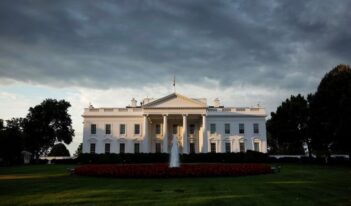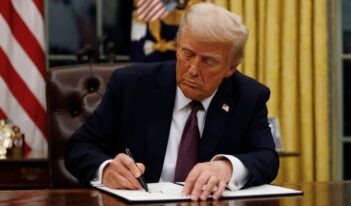
Policy oscillation creates serious problems that may require government scrutiny.
Before the last presidential election, a chief executive officer in a regulated industry might have expected that the all but certain transition to a Clinton Administration would be mostly smooth, involving a continuation of policies on a wide range of issues, from greenhouse gas regulation to the fiduciary duties of financial advisors.
Instead, the Trump Administration has defined its policy program in terms of reversing the prior Administration’s decisions on as many fronts as possible. Although this turnabout has been particularly intense, it actually marks a continuation of a long-developing trend.
This policy oscillation has created little or no public benefit. Putting aside disagreements between partisans about which political party better represents the interests of the American public, let us assume that they are both roughly distant from majoritarian preferences. If this is the case, then the new policies adopted by an electoral winner to replace existing policies will not better comport with what most people want. Moving from a policy status quo adopted during a Democratic administration to a new set of policies favored by Republican elites does not increase the responsiveness of policy to public preferences. Rather, the change merely switches the polarity of red and blue voters, such that the formerly happy are now displeased, and the formerly unhappy are satisfied.
Although this oscillation simply amounts to a transfer between winners and losers, it has substantial costs. Perhaps most obvious is the problem of regulatory uncertainty. Regulated actors frequently argue that they are less concerned with the specifics of a regulatory regime than with its stability and certainty. Substantial swings in policy direction create exactly the opposite condition: when a new administration takes the White House, the entire regulatory architecture is seemingly up for demolition and rebuilding. Planning in such an environment is—to put it mildly—difficult.
Another problem with policy swings stems from sunk compliance costs. When industry has already invested to comply with new rules, those costs often cannot be recovered. After the investment is made, shifting to an ex ante status quo by deregulation is just a waste.
For example, if car manufacturers have already invested in research and development to design more fuel-efficient cars, relaxing the regulatory requirement to produce and sell those cars means that the expenditures were wasted. Some manufacturers still might push for a repeal if they were technological laggards or if there were marginal compliance costs on top of sunk research and development investments. But even if it would be rational for some manufacturers to seek a repeal, from a social perspective, the research and development costs would be wasted.
Both policy uncertainty and the possibility of sunk costs also create incentives for the regulated industry to delay compliance. If a regulated industry faces high uncertainty about whether a compliance expenditure will pay off, it will rationally try to delay compliance for as long as possible in hopes of a shift in administration.
In this way, an uncertain regulatory environment creates incentives for industry to litigate against new rules, lobby in Congress for legislative overrides, and stall compliance—perhaps waiting for an enforcement order before investing in compliance. All of these incentives reduce regulatory benefits while creating wasteful lags in the economic system.
The Office of Information and Regulatory Affairs (OIRA) and the practice of regulatory impact assessment can counteract these effects. These institutions were created during a different political time, roughly from the Nixon Administration through the Ronald Reagan–George H.W. Bush years—a period characterized by consistent Republican control of the presidency (with the exception of the short Carter Administration) and consistent Democratic control of Congress.
As noted in a recent book by political scientist Byron E. Shafer, the election of President William Clinton fundamentally changed that dynamic, and we have now entered a period of so-called partisan volatility. In this new system, short periods of unified party control of the presidency and Congress are followed by periods of divided government, followed by a swing to unified control for the other party, followed again by divided government and a swing in the other direction. This paradigm has governed since President Clinton, with increasing swings between the parties during united government and greater divisiveness during divided government.
At least through the Obama Administration, OIRA seemed to have adapted well to the new era of partisan volatility. In particular, OIRA served an important role as a kind of ballast that tended to stabilize administrations from ideologically extreme influences. Past OIRA Administrators Sally Katzen, John Graham, and Cass Sunstein set tones of moderation during the Clinton, Bush, and Obama Administrations, and they all were likely more committed to analysis and had less of an ideological ax to grind than the median political appointee in their respective administrations. And OIRA itself, as a generalist institution, was less subject to capture by powerful constituencies within either party.
It would be desirable for OIRA to continue playing this role, although it is too early to gauge whether the current administrator, Neomi Rao, has either the tendency toward moderation or the internal influence of her predecessors. The Trump Administration may represent a turn toward hyper-volatility, where the winds of partisanship overwhelm the stabilizing ballast of OIRA and other moderating institutions.
If OIRA remains committed to its stabilizing role, it should require agencies to analyze the costs of policy oscillation. Reversing recently adopted policies enhances regulatory uncertainty and sends a general signal to regulated actors that compliance investments could become wasted sunk costs at any time. The costs of that uncertainty, in addition to whether that cost is greater than the benefits of the regulatory reversal, would be worth investigating. Sometimes, even if a policy was undesirable ex ante, leaving it in place might be superior to an uncertainty-inducing change.
So far, OIRA does not seem focused on the costs of policy oscillation. If regulatory impact assessment is to continue to play a useful role during an age of ever greater partisan volatility, OIRA will need to focus not only on the static costs and benefits of regulation, but also on the very real costs imposed on businesses and society by policy oscillation.
This essay is part of an eight-part series, entitled New Developments in Regulatory Benefit-Cost Analysis.




